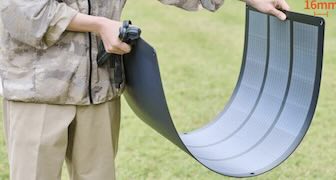Jun 06 (newsonjapan.com) - Anyone considering the purchase of a new phone may have come across the term “eSIM”.
Integrated within the latest handsets from such heavyweights of the telecommunications industry as Apple, Google and Samsung, the eSIM is an embedded alternative to the physical SIM card which we have all become familiar with over the last few decades.
While eSIMs are still emerging as a nascent technology, they are quickly gaining traction within the world of mobile technology and are likely to be included in all makes and models of cellphones – as well as smart watches, headsets and other wearables – in the near future. Not only that, but they’re available for specific countries and regions (such as a Europe eSIM, for example), making them highly attractive for tourists and travelers. But what exactly are they and how do they differ from traditional SIM cards? Read on to find out.
The main differences
The first SIM (subscriber identity module) cards became widely available from a commercial point of view as early as the 1990s, with original incarnations the same size as a credit card of today. Over the years, this technology developed and became smaller and smaller – until the point at which a physical card is on the verge of becoming obsolete altogether with the advent of the eSIM. Here are the main differences between the two:
- Size. While the latest physical SIMs have shrunk substantially over the years (the industry standard “nano” card now measures just 108.24mm2 in surface area), the eSIM is over three times smaller in size (30mm2). Compared to other versions of the SIM card, an eSIM can even be as much as 90% more space efficient.
- Installation. Physical SIM cards are fiddly little critters. First, you have to locate an ejector tool to remove the SIM slot, then daintily place the card into position and follow the instructions. eSIMs dispense with a physical card altogether, meaning a user simply needs to scan a QR code to activate the profile (mobile number and associated account) on their existing phone.
- Interoperability. Because eSIMs are small enough to fit into devices such as headphones, watches and wearables, the scope for their potential is far greater than that of a traditional SIM. Having said that, it is easier to move a physical SIM from one device to another, whether that be because you’re acquiring a new phone or testing an old one’s functionality.
- Profiles. A physical SIM card can, by its very nature, only contain one profile and command only one number. While some handsets are set up to offer dual SIM capability (by having two SIM slots), the eSIM makes a mockery of such shortcomings. Not only does it also allow for insertion of a physical SIM, but a single eSIM can handle up to 10 different profiles simultaneously.
- Compatibility. Physical SIMs have been the industry standard for decades now, which means that any and every operator accommodates them in their products. Because eSIMs are still such an emerging technology, they are as yet only available on the latest phones and devices from a select few manufacturers. However, that is expected to change very soon.
What are the advantages of an eSIM?
So now you understand what the basic defining features of an eSIM are and how they differ from traditional SIMs, it’s time to learn why this may make them a preferable option going forwards. Here are just a few of their main selling points:
- Convenience. Because there is no physical card involved in the process, eSIMs are so much easier to deal with than their traditional counterparts. First of all, there’s no chance of you losing one, while the ability to buy your eSIM package online and activate it remotely within a matter of minutes is a big point in the plus column.
- Travel. When visiting a new country, staying connected to the internet (and to your loved ones) is of the utmost importance to many people. With the ability to download and activate multiple profiles connected to various different networks, eSIMs lend themselves perfectly to seamless travel. Buy a plan before you go and stay connected for the duration.
- Security. Since there’s no physical card to worry about, you don’t have to fret over criminals stealing your eSIM. Data from the eSIM will not be accidentally erased and the pins on the card are impervious to damage (unless the device itself is compromised), meaning on the whole they are far safer and more secure.
- Cross-device use. With eSIMs, it’s much easier to associate several different devices with the same profile/phone number. What’s more, because the eSIM is far smaller in size, it can fit inside devices (like headgear and smartwatches, as well as glasses) which traditional SIMs cannot.
Of course, these advantages are just the tip of the iceberg when it comes to eSIMs. With the technology being refined and furthered all the time, it’s only a matter of time before eSIMs become the norm on all devices – allowing for virtually limitless potential in how they’re used.















